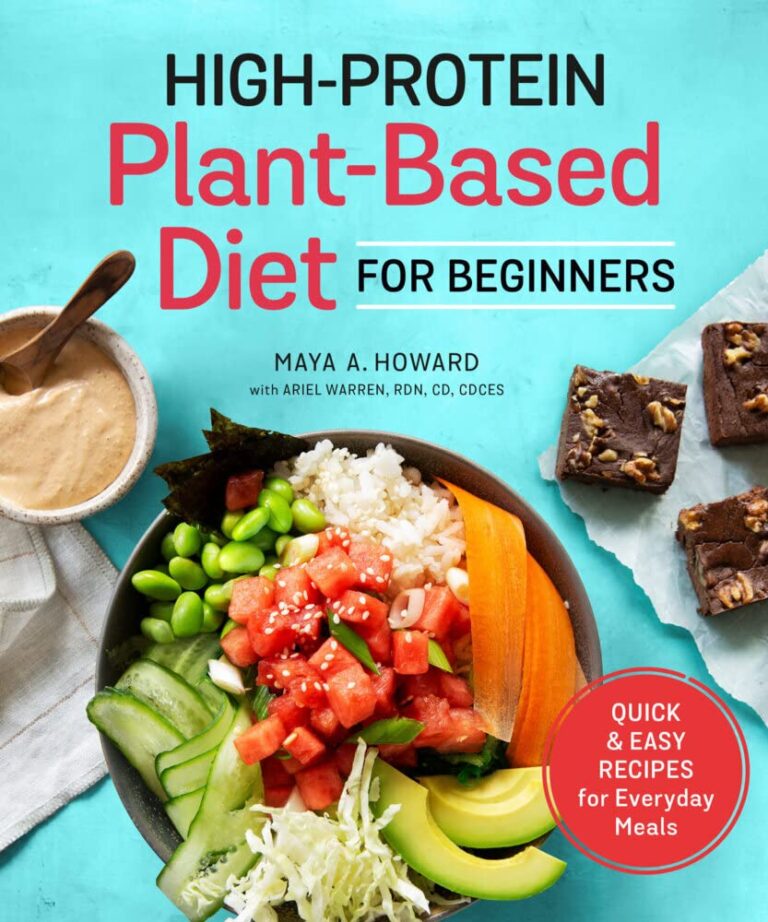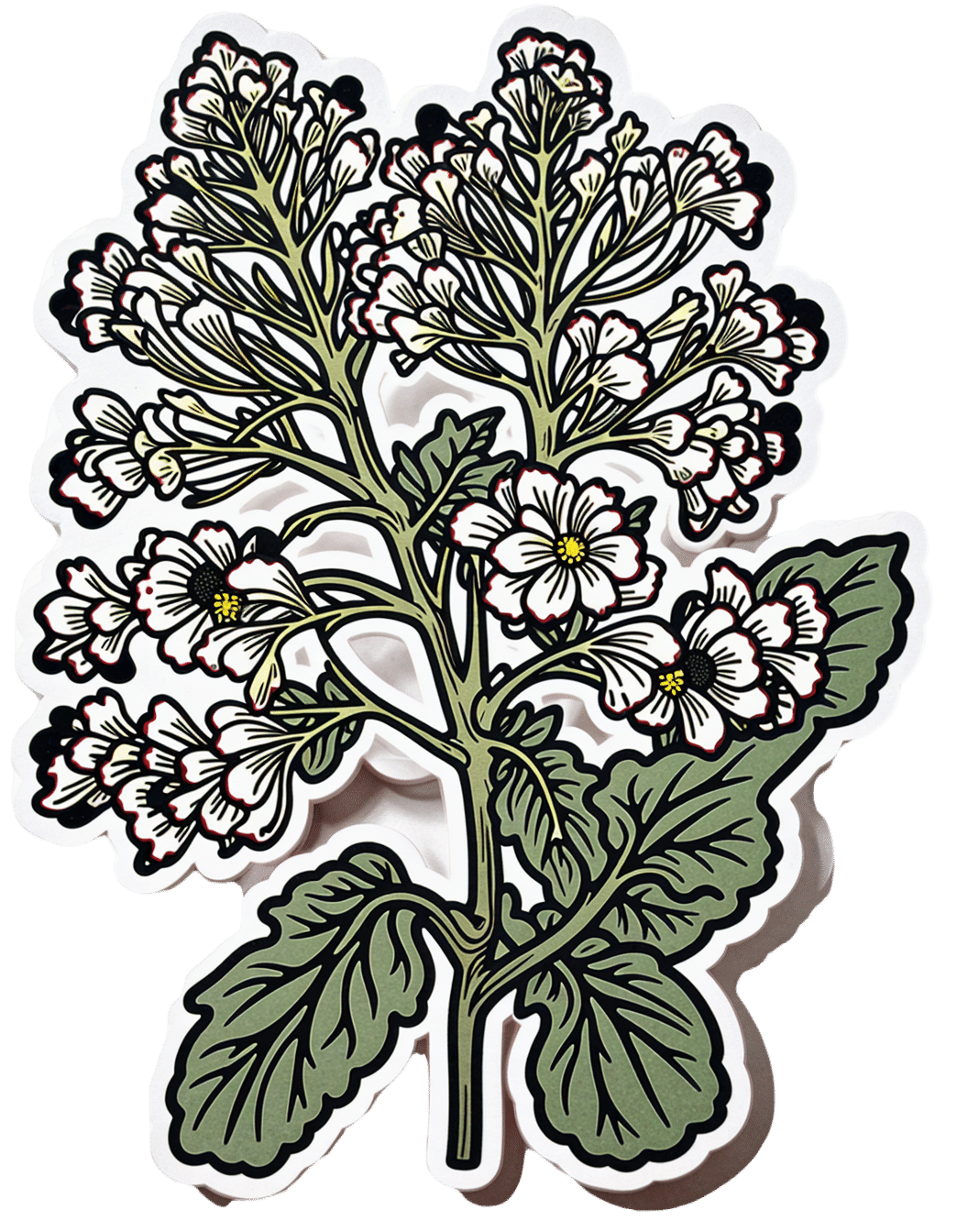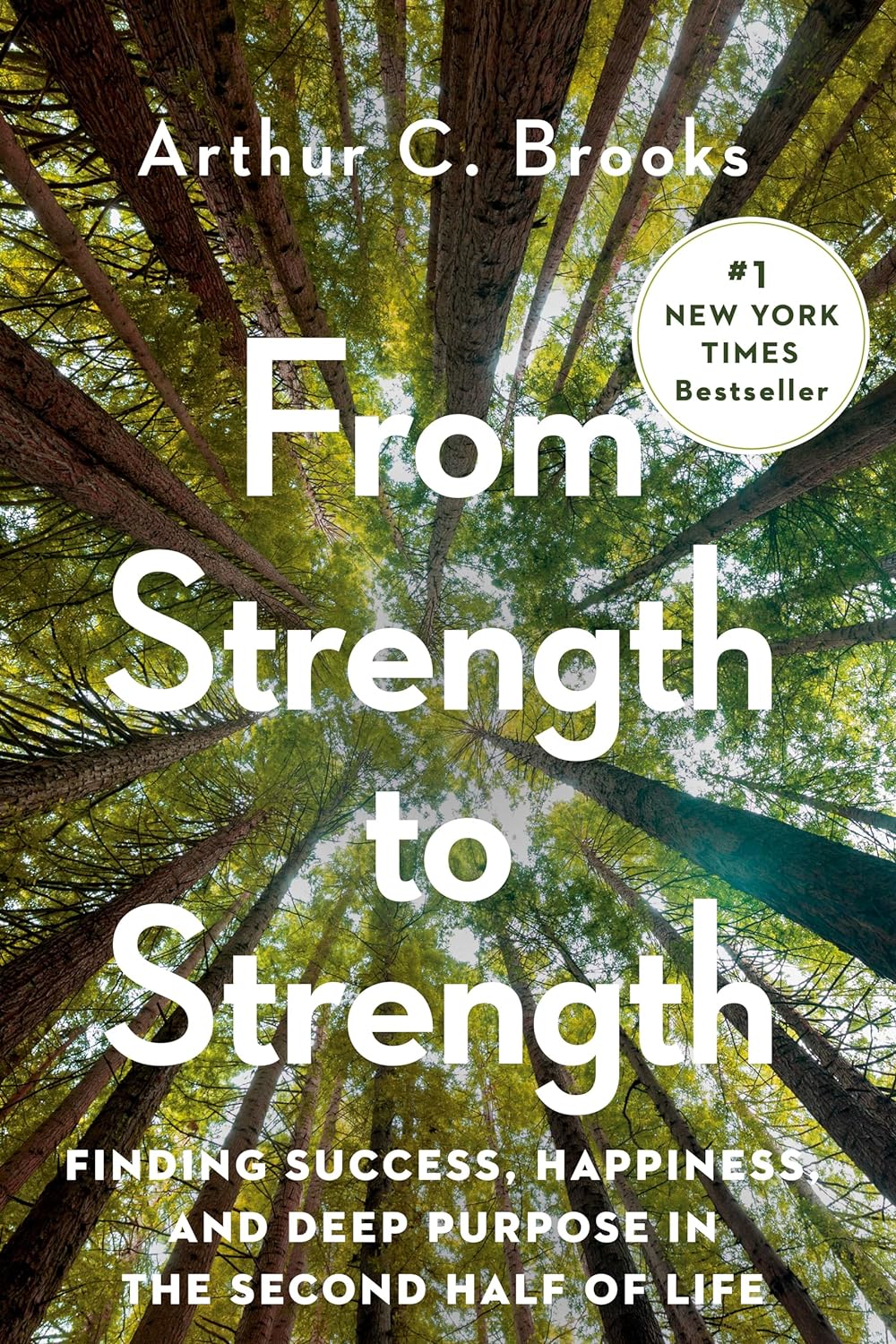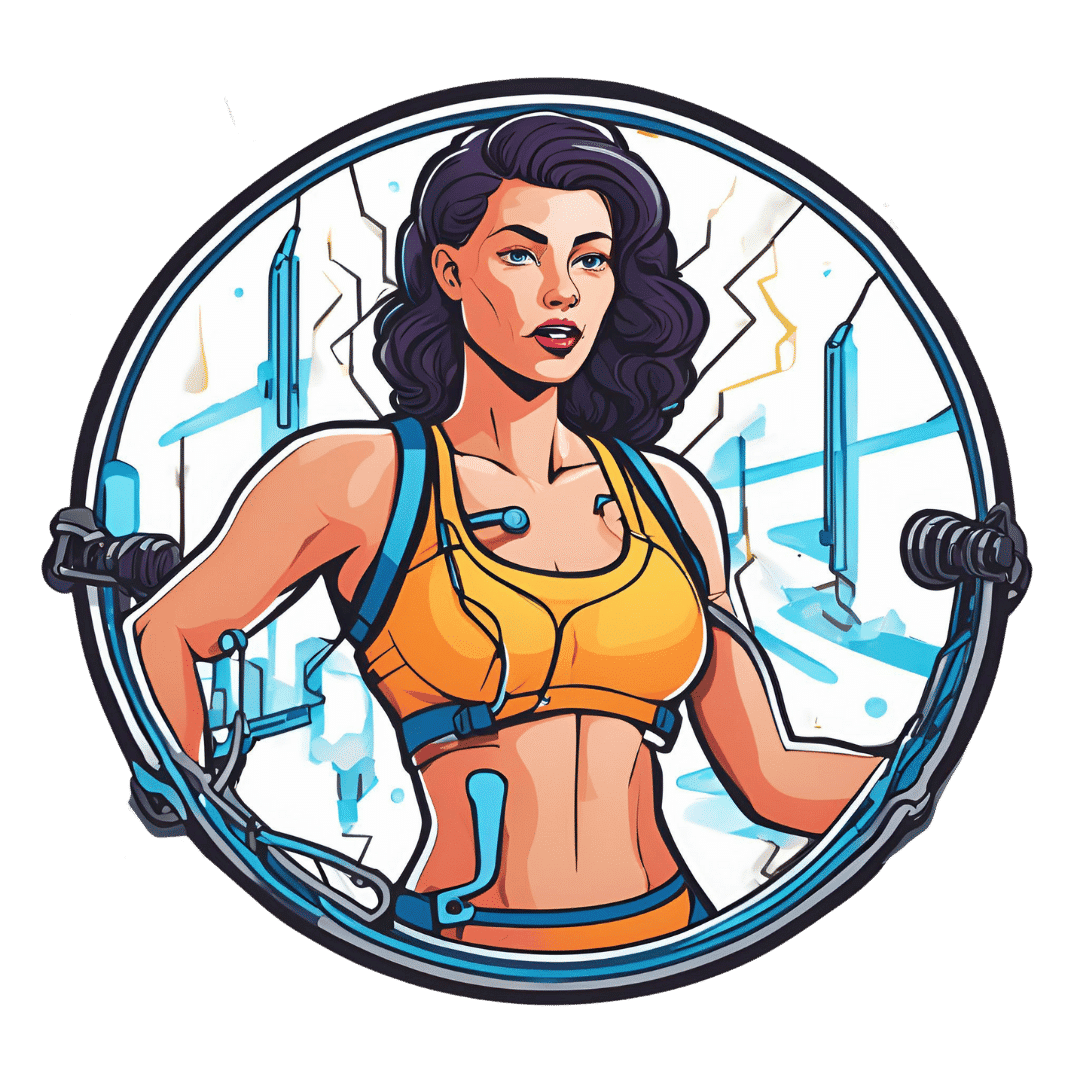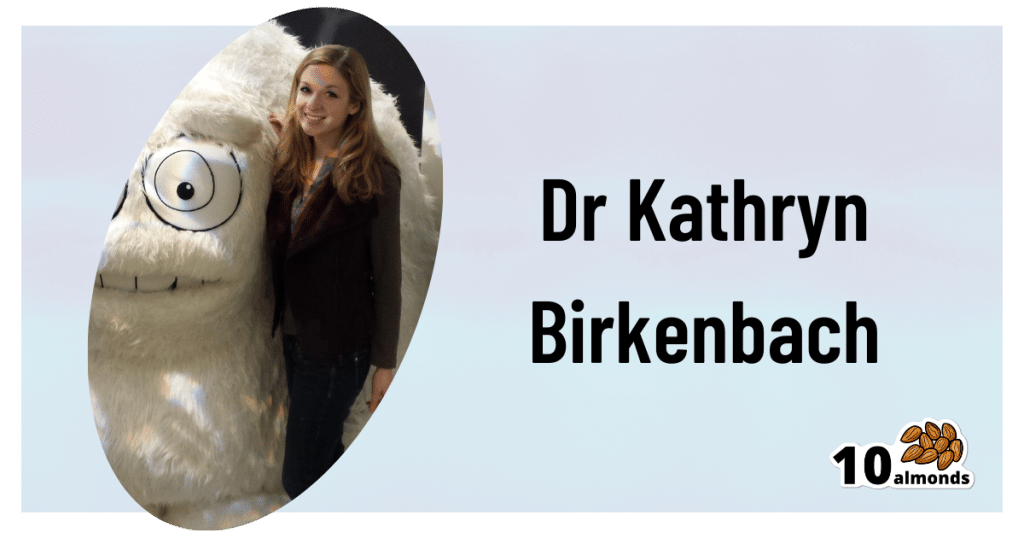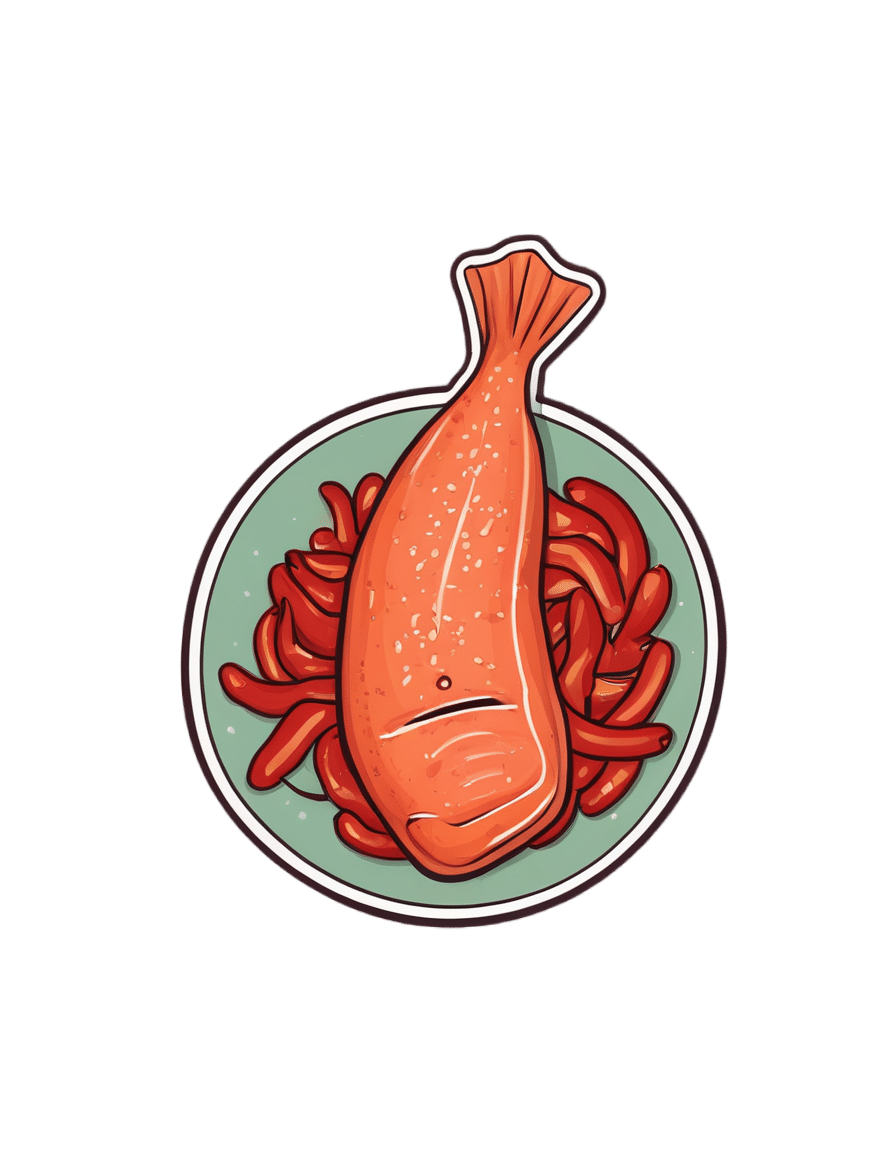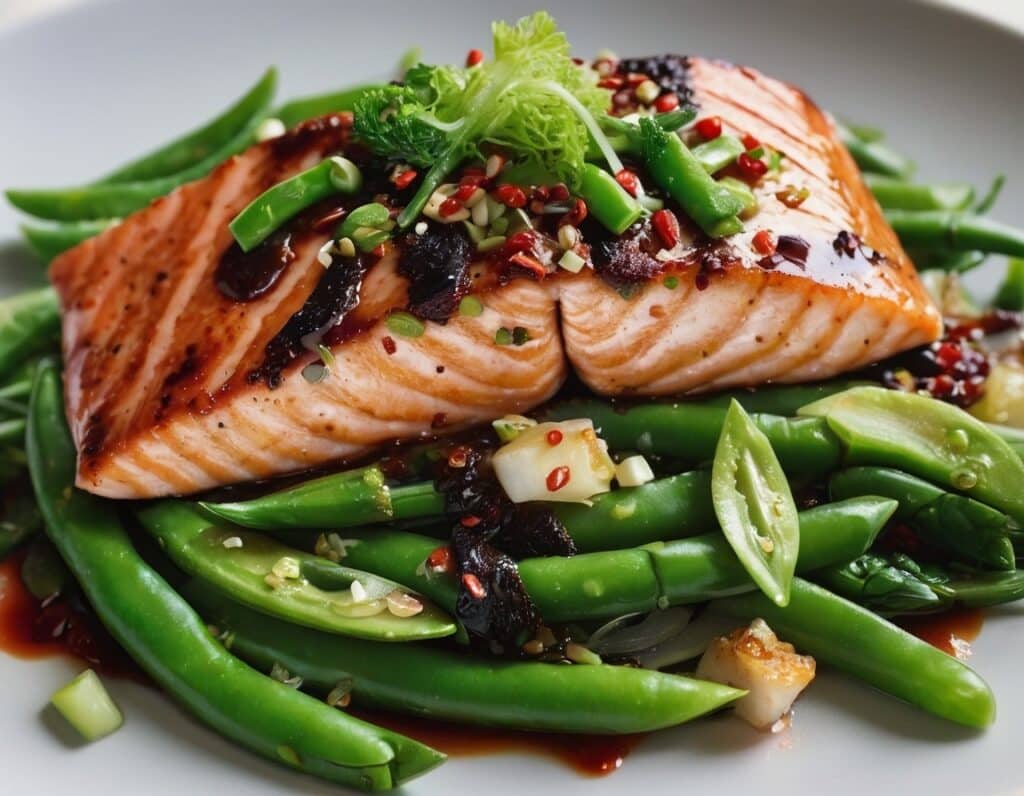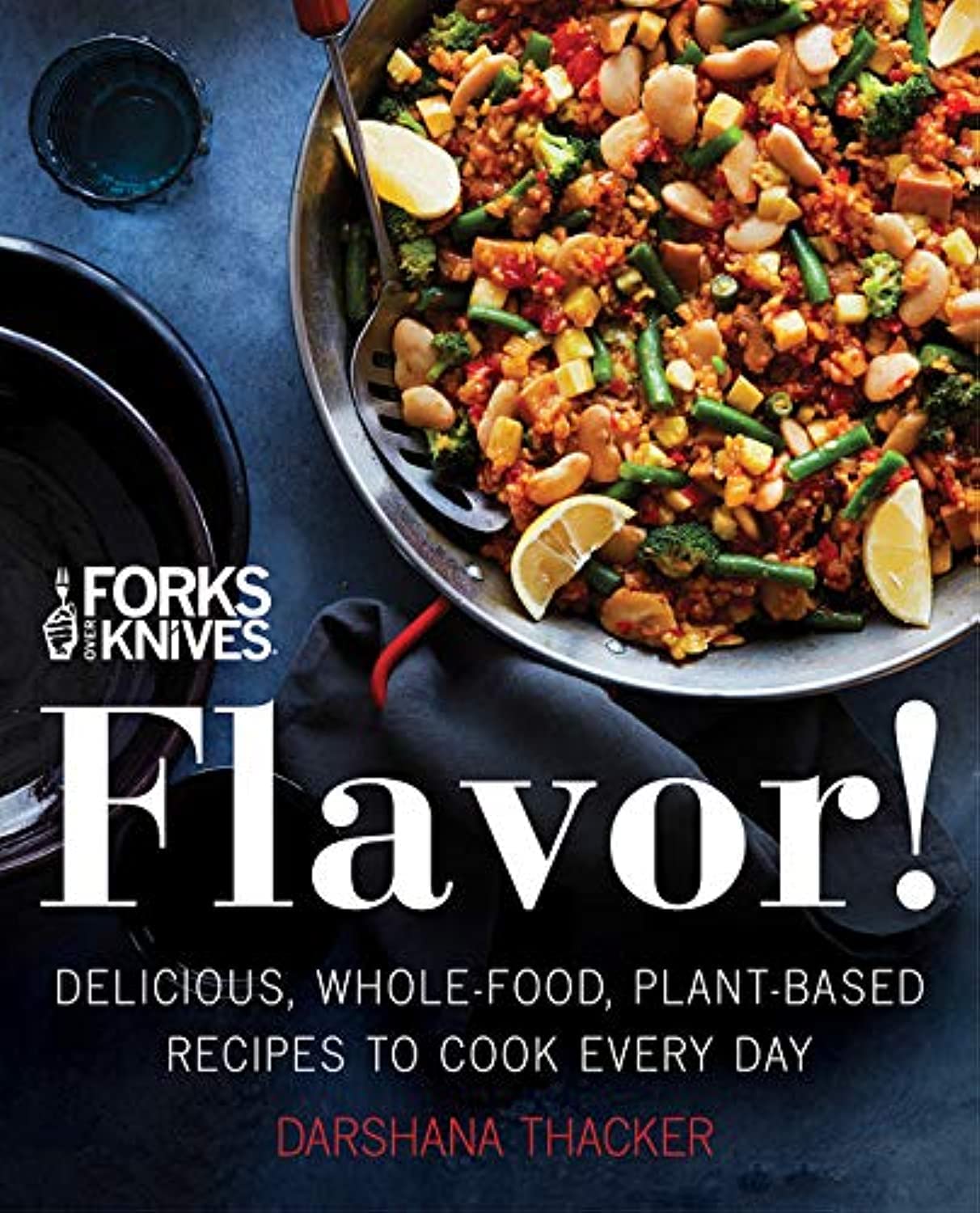
Forks Over Knives: Flavor! – by Darshana Thacker
10almonds is reader-supported. We may, at no cost to you, receive a portion of sales if you purchase a product through a link in this article.
It’s important to not have to choose too much between health and flavor, because the outcome will never be a good one, either for your health or your happiness. And what’s bad for your happiness will ultimately not work out and thus will be bad for your general health, so, the question becomes: how to get both?
This book handles that nicely, delivering plant-based dishes that are also incidentally oil-free, and also either gluten-free or else there’s an obvious easy substitution to make it such. The flavor here comes from the ingredients as a whole, including the main ingredients as well as seasonings.
On the downside, occasionally those ingredients may be a little obscure if you don’t live in, say, San Francisco, and the ingredients weren’t necessarily chosen for cooking on a budget, either.
However, in most cases for most people it will, at worse, inspire you to try using an ingredient you don’t usually use—so that’s a good result.
The recipes are very clear and easy to follow, although not all are illustrated, and the “ready in…” times are about as accurate as they are for any cookbook, that is to say, it’s the time in which it conceivably can be done if (like the author, a head chef) you have a team of sous-chefs who have done a bunch of prep for you (e.g. sweet potato does not normally come in ½” dice; it comes in sweet potatoes) and laid everything out in little bowls mise-en-place style, and also you know the procedure well enough to not have to stop, hesitate, check anything, wash anything, wait for water to boil or anything else to heat up, or so forth. In other words, if you’re on your own in your home kitchen with normal domestic appliances, it’s going to take a little longer than for a professional in a professional kitchen with professional help.
But don’t let that detract from the honestly very good recipes.
Bottom line: if you’d like to level-up your plant-based cooking, this will definitely make your dishes that bit better!
Click here to check out Forks Over Knives: Flavor!, and dig in!
Don’t Forget…
Did you arrive here from our newsletter? Don’t forget to return to the email to continue learning!
Recommended
Learn to Age Gracefully
Join the 98k+ American women taking control of their health & aging with our 100% free (and fun!) daily emails:
-
The 7-Minute Morning Routine That Eliminates Stiffness
10almonds is reader-supported. We may, at no cost to you, receive a portion of sales if you purchase a product through a link in this article.
The video title says “65+”, but honestly, if you are younger than that, and wait until you are 65 to attend to such things as mobility maintenance, then you’ll wish you’d started a long time previously!
So, today is always a good day to start, whatever your age.
A good way to start the day
The exercises do not, in fact, include the forwards bend depicted in the thumbnail. Rather, they are:
Exercise 1: toe wiggles (1 minute):
- while lying in bed, open and close your toes to improve foot mobility.
- this may seem silly and/or trivial, but it’s vital for overall mobility as foot health impacts daily movement, and your toes are responsible for a surprising amount when it comes to your posture, gait, etc.
Exercise 2: calf and hamstring stretch (1 minute):
- use a rolled-up towel (or similar non-stretchy long thing) to pull one foot towards you while straightening your leg.
- hold the stretch for 30 seconds per leg to relieve tightness in the calf or hamstring.
Exercise 3: knee flexion (1 minute):
- bend your knee as much as possible and pull your shin towards you.
- perform for 30 seconds per leg, gently easing into stiffness if necessary to improve knee mobility (i.e. if this is difficult at first).
Exercise 4: knee extension (1 minute):
- straighten one leg on the bed and press your knee down while pulling the toes up.
- hold for 5 seconds, repeat six times per leg, improving knee extension and strengthening the quads.
Exercise 5: hip flexion mobilization (1 minute):
- with your knees bent, pull one knee towards your chest and release in a rhythmic motion (see video for differences from #3)
- do 30 seconds per leg to improve hip mobility and loosen stiffness, especially beneficial for those with hip arthritis.
exercise 6: cat-cow stretch (1 minute):
- on all fours, alternate between arching your back (cat) and dipping it (cow).
- improves mobility in the neck, mid-back, and lower back.
exercise 7: shoulder and upper back stretch (1 minute):
- stand facing a wall, place your hands on the wall, and hinge at the hips to drop your torso between your arms.
- stretches lats, shoulders, and the upper back; do two 30-second holds..
Click Here If The Embedded Video Doesn’t Load Automatically!
Want to learn more?
You might also like:
Over 50? Do These 3 Stretches Every Morning To Avoid Pain
Take care!
Share This Post
-
Black Cohosh vs The Menopause
10almonds is reader-supported. We may, at no cost to you, receive a portion of sales if you purchase a product through a link in this article.
Black Cohosh, By Any Other Name…
Black cohosh is a flowering plant whose extracts are popularly used to relieve menopausal (and postmenopausal) symptoms.
Note on terms: we’ll use “black cohosh” in this article, but if you see the botanical names in studies, the reason it sometimes appears as Actaea racemosa and sometimes as Cimicfuga racemosa, is because it got changed and changed back on account of some disagreements between botanists. It’s the same plant, in any case!
Read: Reclassification of Actaea to include Cimicifuga and Souliea (Ranunculaceae)
Does it work?
In few words: it works for physical symptoms, but not emotional ones, based on this large (n=2,310) meta-analysis of studies:
❝Black cohosh extracts were associated with significant improvements in overall menopausal symptoms (Hedges’ g = 0.575, 95% CI = 0.283 to 0.867, P < 0.001), as well as in hot flashes (Hedges’ g = 0.315, 95% CIs = 0.107 to 0.524, P = 0.003), and somatic symptoms (Hedges’ g = 0.418, 95% CI = 0.165 to 0.670, P = 0.001), compared with placebo.
However, black cohosh did not significantly improve anxiety (Hedges’ g = 0.194, 95% CI = -0.296 to 0.684, P = 0.438) or depressive symptoms (Hedges’ g = 0.406, 95% CI = -0.121 to 0.932, P = 0.131)❞
~ Dr. Ryochi Sadahiro et al., 2023
Source: Black cohosh extracts in women with menopausal symptoms: an updated pairwise meta-analysis
Here’s an even larger (n=43,759) one that found similarly, and also noted on safety:
❝Treatment with iCR/iCR+HP was well tolerated with few minor adverse events, with a frequency comparable to placebo. The clinical data did not reveal any evidence of hepatotoxicity.
Hormone levels remained unchanged and estrogen-sensitive tissues (e.g. breast, endometrium) were unaffected by iCR treatment.
As benefits clearly outweigh risks, iCR/iCR+HP should be recommended as an evidence-based treatment option for natural climacteric symptoms.
With its good safety profile in general and at estrogen-sensitive organs, iCR as a non-hormonal herbal therapy can also be used in patients with hormone-dependent diseases who suffer from iatrogenic climacteric symptoms.❞
~ Dr. Castelo-Branco et al., 2020
(iCR = isopropanolic Cimicifuga racemosa)
So, is this estrogenic or not?
This is the question many scientists were asking, about 20 or so years ago. There are many papers from around 2000–2005, but here’s a good one that’s quite representative:
❝These new data dispute the estrogenic theory and demonstrate that extracts of black cohosh do not bind to the estrogen receptor in vitro, up-regulate estrogen-dependent genes, or stimulate the growth of estrogen-dependent tumors❞
Source: Is Black Cohosh Estrogenic?
(the abstract is a little vague, but if you click on the PDF icon, you can read the full paper, which is a lot clearer and more detailed)
The short answer: no, black cohosh is not estrogenic
Is it safe?
As ever, check with your doctor as everyone’s situation can vary, but broadly speaking, yes, it has a very good safety profile—including for breast cancer patients, at that. See for example:
- Black cohosh efficacy and safety for menopausal symptoms: the Spanish Menopause Society statement
- Black cohosh (Cimicifuga racemosa): safety and efficacy for cancer patients
- The safety of black cohosh (Actaea racemosa, Cimicifuga racemosa)
Where can I get some?
We don’t sell it, but here for your convenience is an example product on Amazon
Enjoy!
Share This Post
-
From Strength to Strength – by Dr. Arthur Brooks
10almonds is reader-supported. We may, at no cost to you, receive a portion of sales if you purchase a product through a link in this article.
For most professions, there are ways in which performance can be measured, and the average professional peak varies by profession, but averages are usually somewhere in the 30–45 range, with a pressure to peak between 25–35.
With a peak by age 45 or perhaps 50 at the latest (aside from some statistical outliers, of course), what then to expect at age 50+? Not long after that, there’s a reason for mandatory retirement ages in some professions.
Dr. Brooks examines the case for accepting that rather than fighting it, and/but making our weaknesses into our strengths as we go. If our fluid intelligence slows, our accumulated crystal intelligence (some might call it “wisdom“) can make up for it, for example.
But he also champions the idea of looking outside of ourselves; of the importance of growing and fostering connections; giving to those around us and receiving support in turn; not transactionally, but just as a matter of mutualism of the kind found in many other species besides our own. Indeed, Dr. Brooks gives the example of a grove of aspen trees (hence the cover art of this book) that do exactly that.
The style is very accessible in terms of language but with frequent scientific references, so very much a “best of both worlds” in terms of readability and information-density.
Bottom line: if ever you’ve wondered at what age you might outlive your usefulness, this book will do as the subtitle suggests, and help you carve out your new place.
Click here to check out From Strength To Strength, and find yours!
Share This Post
Related Posts
-
Increase Your Muscle Mass Boost By 26% (No Extra Effort, No Supplements)
10almonds is reader-supported. We may, at no cost to you, receive a portion of sales if you purchase a product through a link in this article.
You’ve probably seen this technology advertised, but the trick is in how it’s used (which is not how most people use it).
It’s about neuromuscular electrical stimulation (NMES), also called electrical muscle stimulation (EMS); in other words, those squid-like electrode kits that promise “six-pack abs without exercise”, by stimulating the muscles for you—using the exact same tech as for transcutaneous electrical nerve stimulation (TENS), for pain relief.
Do they work for pain relief? Yes, for many people in any case. But that’s beyond the scope of today’s article.
Do they work for building muscles as advertised? No. The limiting factor is that they can’t fully exert the muscles in the same way actual exercise can, because of the limitations to how much electrical current can safely be applied.
However…
The cyborgization of your regular workout
A meta-analysis of 13 studies compared two [meta-]groups of exercisers:
- Group 1 doing conventional resistance training
- Group 2 doing the same resistance training, plus NMES at the same time (specifically: NMES of the same muscles being used in the workout)
The analysis had two output variables: strength and muscle mass
What they found: group 2 enjoyed more than 31% greater strength gains, and 26% greater muscle mass gains, from the same training over the same period of time.
Of course, one of the biggest challenges to strength gain and muscle mass gain is hitting a plateau, so it’s worth noting that when they looked at training periods ranging from 2 weeks to 16 weeks, longer durations yielded better results—it is, it seems, the gift that keeps on giving.
You can find the paper here (which also explains how they analysed data from 13 different studies to get one coherent set of results):
How it works and why it matters
While the paper itself does not go into how it works, a reasonable hypothesis is that it works by “confusing” the muscles—because they are receiving mixed signals (one set from your brain, one set from the electrodes), with fast- and slow-twitch muscle fibers both working at the same time.
Another way to “confuse” the muscles is by High Intensity [Interval] Resistance Training (HIRT)—which is basically High Intensity Interval Training (HIIT), but for resistance training specifically.
See: How To Do HIIT (Without Wrecking Your Body) and HIIT, But Make It HIRT
Now, we want to confuse our muscles, not our readers, so if that’s all too much to juggle at once, just pick one and go with it. But today’s article is about the RT+NEMS combination, so perhaps you’ll pick that.
Why it matters: as we get older, sarcopenia (the loss of muscle mass) becomes more of an issue, and even if we’re not inclined to a career in bodybuilding, we do still need to at least maintain a healthy muscle mass because:
- Strong muscles improve our stability and make us less likely to fall
- Strong muscles force the body to build strong bones to hold them on, which means lower risk of fractures or worse
- Muscle mass itself improves the body’s basal metabolic rate, which means systemic benefits to the whole body (including against metabolic diseases especially)
See also: Resistance Is Useful! (Especially As We Get Older)
Want to try it?
If you don’t already have a NMES/EMS/TENS kit lying around the house, here’s an example product on Amazon—remember to use it simultaneously with your regular resistance training workout, on the same muscles at the same time, to get the benefit we talked about! 😎
Enjoy!
Don’t Forget…
Did you arrive here from our newsletter? Don’t forget to return to the email to continue learning!
Learn to Age Gracefully
Join the 98k+ American women taking control of their health & aging with our 100% free (and fun!) daily emails:
-
Screaming at Screens?
10almonds is reader-supported. We may, at no cost to you, receive a portion of sales if you purchase a product through a link in this article.
I Screen, You Screen, We All Screen For…?
Dr. Kathryn Birkenbach is a postdoctoral research fellow in the Department of Neuroscience at Columbia University, and Manager of Research at Early Medical in New York.
Kathryn has things to tell us about kids’ neurological development, and screen time spent with electronic devices including phones, tablets, computers, and TVs.
From the 1960s criticism of “the gogglebox” to the modern-day critiques of “iPad babies” as a watchword of parental neglect, there’s plenty people can say against screen time, but Dr. Birkenbach tells us the that the reality is more nuanced:
Context Is Key
On a positive note”: consistent exposure to age-appropriate educational material results in quicker language acquisition than media that’s purely for entertainment purposes, or not age-appropriate.
Contrary to popular belief, children do not in fact learn by osmosis!
Interaction Is Far More Valuable Than Inaction
Kathryn advises that while adults tend to quite easily grasp things from instructional videos, the same does not go for small children.
This means that a lot of educational programming can be beneficial to small children if and only if there is an adult with them to help translate the visual into the practical!
There’s a story that does the rounds on the Internet: a young boy wanted to train his puppy, but didn’t know how. He asked, and was told “search for puppy training on YouTube”. His parents came back later and found him with his iPad, earnestly showing the training videos to the puppy.
We can laugh at the child’s naïvety, knowing that’s not how it works and the puppy will not learn that way, so why make the same mistake in turn?
❝The phenomenon known as the “video deficit effect” can be overcome, when an on-screen guide interacts with the child or a parent is physically present and draws the child’s attention to relevant information.
In other words, interaction with others appears to enhance the perceived salience of on-screen information, unlocking a child’s ability to learn from a medium which would otherwise offer no real-world benefit.❞
Screens Can Supplement, But Can’t Replace, Live Learning & Play
Sci-fi may show us “education pods” in which children learn all they need to from their screen… but according to our most up-to-date science, Dr. Birkenbach says, that simply would not work at all.
Screen time without adult interactions will typically fail to provide small children any benefit.
There is one thing it’s good at, though… attracting and keeping attention.
Thus, even a mere background presence of a TV show in the room will tend to actively reduce the time a small child spends on other activities, including live learning and exploratory play.
The attention-grabbing abilities of TV shows don’t stop at children, though! Adult caregivers will also tend to engage in fewer interactions with their children… and the interactions will be shorter and of lower quality.
In Summary:
- Young children will tend not to learn from non-interactive screen time
- Interactive screen time, ideally with a caregiver, can be educational
- Interactive screen time, not with a carer, can be beneficial (but a weak substitute)
- Interactive screen time refers to shows such as Dora The Explorer, where Dora directly addresses the viewer and asks questions…But it’s reliant on the child caring to answer!
- It can also mean interactive educational apps, provided the child does consciously interact!
- Randomly pressing things is not conscious interaction! The key here is engaging with it intelligently and thoughtfully
- A screen will take a child’s time and attention away from non-screen things: that’s a genuine measurable loss to their development!
Absolute Bottom Line:
Screens can be of benefit to small children, if and only if the material is:
- Age-Appropriate
- Educational
- Interactive
If it’s missing one of those three, it’ll be of little to no benefit, and can even harm, as it reduces the time spent on more beneficial activities.
Don’t Forget…
Did you arrive here from our newsletter? Don’t forget to return to the email to continue learning!
Learn to Age Gracefully
Join the 98k+ American women taking control of their health & aging with our 100% free (and fun!) daily emails:
-
Chili Hot-Bedded Salmon
10almonds is reader-supported. We may, at no cost to you, receive a portion of sales if you purchase a product through a link in this article.
This one can be made in less time than it takes to order and receive a Chinese take-out! The principle is simple: it’s a bed of greens giving pride of place to a salmon fillet in a deliciously spicy marinade. So healthwise, we have greens-and-beans, healthy protein and fats, and tasty polyphenols. Experientially, we have food that tastes a lot more decadent than it is!
You will need
- 4 salmon fillets (if vegan, substitute firm tofu; see also how to make this no-salmon salmon)
- 2 bok choy, washed and stems trimmed
- 7 oz green beans, trimmed
- 4 oz sugar snap peas
- 4 spring onions, sliced
- 2 tbsp chili oil*
- 1 tbsp soy sauce
- 1 tsp garlic paste
- 1 tsp ginger paste
- 1 tsp black pepper
*this can be purchased as-is, but if you want to make your own in advance, simply take extra virgin olive oil and infuse it with [finely chopped, red] chili. This is a really good thing to do for commonly-used flavored oils, by the way—chili oil and garlic oil are must-haves in this writer’s opinion; basil oil, sage oil, and rosemary oil, are all excellent things to make and have in, too. Just know, infusing is not quick, so it’s good to do these in batch and make plenty well before you need it. For now, if you don’t have any homemade already, then store-bought is fine 🙂
Method
(we suggest you read everything at least once before doing anything)
1) Preheat the oven to 360℉/180℃/gas mark 6
2) Lay out 4 large squares of foil, and put the bok choy, green beans, and sugar snap peas in a little pile in the middle of each one. Put a salmon fillet on top of each (if it has skin, score the skin first, so that juices will be able to penetrate, and put it skin-side down), and then top with the spring onions.
3) Mix the rest of the ingredients in a small bowl, and then spoon this marinade evenly over each of the fillets (alternatively, if you have occasion to marinade the fillets in advance and let them sit in the marinade in the fridge for some hours before, do so, in which case this step will already be done now, because past-you did it. Yay for past-you!)
4) Fold up the edges of the foil, making each one an enclosed parcel, gently sealed at the top by folding it over. Put them on a baking tray and bake for about 20 minutes.
5) Serve! If you’d like some carbs with it, we recommend our tasty versatile rice recipe.
Enjoy!
Want to learn more?
For those interested in some of the science of what we have going on today:
- We Are Such Stuff As Fish Are Made Of
- Farmed Fish vs Wild-Caught ← don’t underestimate the difference this makes!
- Tasty Polyphenols For Your Heart And Brain
- Brain Food? The Eyes Have It!
- Our Top 5 Spices: How Much Is Enough For Benefits?
Take care!
Don’t Forget…
Did you arrive here from our newsletter? Don’t forget to return to the email to continue learning!
Learn to Age Gracefully
Join the 98k+ American women taking control of their health & aging with our 100% free (and fun!) daily emails:

